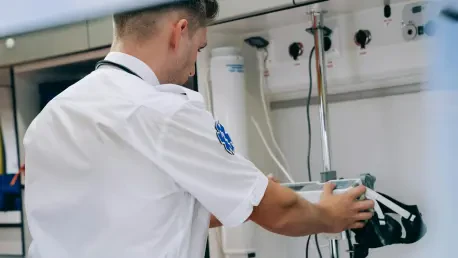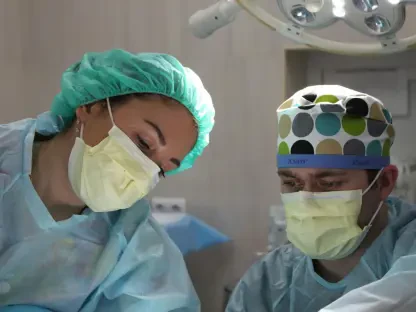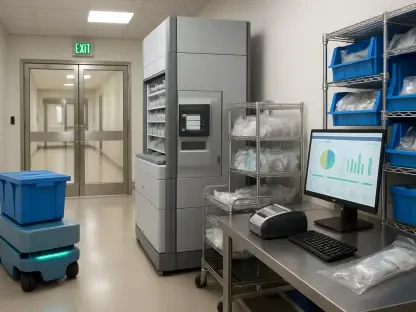The landscape of Emergency Medical Services (EMS) has been radically transformed by the emergence of community paramedicine, a model that redefines traditional roles and practices within the industry. This approach shifts the focus from mere emergency response to a holistic, patient-centered strategy, addressing the fundamental causes of health emergencies and emphasizing continuity of care and preventive measures. This new framework demands a change in perspective for EMS providers, urging them to break free from ingrained crisis-driven responses. Instead, it fosters an environment where long-term health and social needs hold precedence over the quick, intervention-based strategies of the past.
The Shift from Crisis Response to Patient-Centered Care
Changing the EMS Mindset
Transitioning from conventional emergency medical services to community paramedicine requires profound adjustments in how EMS professionals approach their responsibilities. In the traditional system, the emphasis was overwhelmingly placed on swift intervention, often motivated by the urgency of life-and-death scenarios. Community paramedicine, however, introduces a paradigm where understanding patients’ underlying conditions and backgrounds becomes paramount. The focus is less on treating symptoms right after an incident and more on engaging with patients to provide lasting solutions, fostering trust and rapport critical for ongoing patient care.
Adapting to this model involves a delicate balance; EMS professionals must retain their ability to act decisively while integrating deeper empathy and patience. The effectiveness of this transformation relies heavily on the relationship-building aspect, as fostering connections with patients can lead to better health outcomes and more informed care decisions. Understanding patients’ lives beyond their immediate medical needs allows paramedics to identify factors contributing to recurrent emergencies, such as chronic illnesses, medication compliance, and socioeconomic challenges. This shift from reactionary care to proactive engagement marks a significant step forward in providing comprehensive healthcare solutions.
Challenges in Adapting to the New Model
The transition to a proactive, patient-focused approach in EMS is not without its challenges. EMS professionals are often accustomed to a rapid-paced environment where speed and accuracy are vital. Diverging from this requires a rewiring of habitual responses honed through years of emergency intervention practice. The transformation does not entail abandoning the decisive, quick-thinking skills honed in high-pressure situations. However, it involves augmenting those capabilities with complementary skills like active listening and motivational interviewing, emphasizing prevention and care continuity over immediate crisis management.
Furthermore, the success of this transition is contingent upon evolving metrics of success in EMS. Traditional benchmarks like rapid response times and immediate clinical outcomes are supplemented, if not replaced, by longer-term goals such as patient stability and satisfaction. These changes necessitate ongoing training and development for EMS providers, equipping them with the tools required to succeed in this new landscape. Beyond clinical skills, fostering empathy and patience, essential components of community paramedicine, will enable EMS professionals to make meaningful, lasting contributions to the patients and communities they serve.
Integrating EMS Into Broader Healthcare Systems
Breaking Down Healthcare Silos
As EMS models evolve, a trend towards greater integration with broader healthcare systems emerges, bringing with it a more holistic approach to patient care. Community paramedicine plays a crucial role in bridging gaps within the healthcare system, connecting disparate elements to create cohesive patient care paths. By collaborating with other healthcare providers including physicians, nurse practitioners, and social workers, EMS professionals extend their impact beyond immediate medical interventions to become vital components of multifaceted care teams.
This integration facilitates more effective management of chronic health conditions and social determinants of health, addressing issues like housing instability and food insecurity, which often contribute to health crises. By dismantling silos between healthcare sectors, community paramedicine enhances not only the quality of care patients receive but also the communication and collaboration among healthcare professionals. This paves the way for improved health outcomes for communities, making healthcare more accessible and efficient.
The Role of Leadership in Facilitating Change
Leadership within EMS organizations plays a pivotal role in the successful implementation of community paramedicine. To navigate this complex transition, leaders must advocate for systematic changes that solidify the importance of a patient-centered approach. Critical aspects include restructuring training programs to prioritize skills like active listening, trauma-informed care, and the building of trust with patients. EMS leaders are tasked with shaping the culture to support the evolution towards community paramedicine, ensuring that providers feel equipped and empowered to adopt these new methods.
Moreover, leaders serve as advocates, illustrating the profound benefits community paramedicine offers to patients, EMS providers, and the healthcare system at large. By championing this movement, they facilitate a supportive environment for professionals adapting to new roles and expectations. Their guidance is essential in conveying the fundamental value of the transition, framing community paramedicine not as a departure from traditional EMS, but as a necessary evolution that enhances the overall quality and reach of healthcare services.
Harnessing the Potential of EMS Professionals
Building on Existing Strengths
Community paramedicine is fundamentally about leveraging the inherent strengths and adaptability of EMS professionals to navigate and thrive in this reformed system. The problem-solving skills, resilience, and adaptability characteristic of EMS providers make them particularly well-suited to the patient-centered care model. Their ability to assess and respond to unpredictable situations transitions seamlessly into identifying and managing various aspects of patients’ long-term health needs. Equipped with the necessary training and support, EMS professionals can effectively broaden their scope, using their expertise to impact patient care beyond immediate crises.
The model also aligns with EMS professionals’ deep-seated motivation to help those in need, providing a platform where this impulse can be channeled into long-term patient relationships and preventive care strategies. By cultivating a mindset attuned to ongoing health management, EMS professionals find fulfillment in making enduring contributions to patient well-being and community health.
The Cultural Shift Within EMS Organizations
The adoption of community paramedicine signifies much more than an operational change; it reflects a broader cultural shift within EMS organizations. This transition demands a reevaluation of organizational values, methods, and goals, as the emphasis moves from emergency response to preventive and holistic care. A successful integration requires organizations to cultivate a culture that prizes collaboration, empathy, and long-term relationships. Training programs must be updated to reinforce this approach, ensuring that EMS professionals are not only competent in their expanded roles but also confident in their ability to deliver comprehensive care.
Notably, this cultural shift extends beyond technical training to include a reimagining of EMS mission statements, policies, and community engagement strategies. EMS organizations dedicated to advancing community paramedicine must communicate these revised objectives to their teams and communities, fostering an understanding of and commitment to the new direction. By supporting EMS providers through this transition with robust resources and encouragement, organizations can enhance job satisfaction and professional fulfillment while significantly improving patient care standards.
A Promising Future for EMS and Community Health
The Emergency Medical Services (EMS) sector has undergone a significant transformation with the rise of community paramedicine, a model reshaping typical roles and practices within the industry. This approach shifts the emphasis from merely responding to emergencies to a comprehensive, patient-centered strategy. Community paramedicine seeks to tackle the root causes of health emergencies, focusing on continuity of care and preventative measures. This paradigm shift requires EMS providers to adopt a new perspective, moving away from traditional crisis-driven responses. Instead, the emphasis is now on fostering environments where addressing long-term health and social needs takes priority over previous quick, intervention-based tactics. Such change encourages EMS to play a proactive role, guiding community members toward better health outcomes and potentially reducing the frequency of emergencies. The evolution of this model illustrates a broader trend in healthcare, highlighting the importance of addressing social determinants of health and ensuring care continuity within communities.









